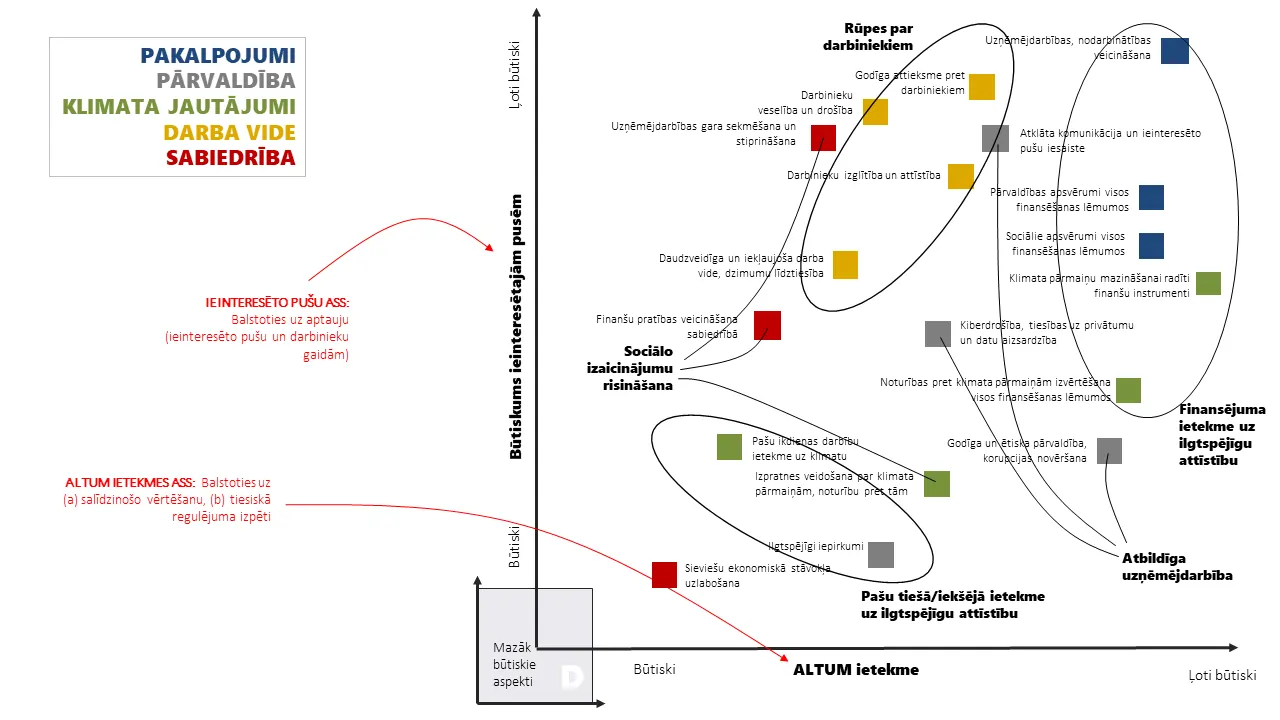Materiality matrix
Altum works closely with its stakeholders, and recognising Altum’s specific role in the national economy identified the needs of stakeholders and address them. Altum is aware of and assesses the social, environmental and economic impacts of its activities and involves stakeholders in solving issues of mutual concern. In building relationships with stakeholders, Altum organises and engages them in consultations, partnerships, informative and educational events.
To establish Altum’s materiality matrix for sustainability and define the ambition level for sustainable finance in the loan portfolio, stakeholder identification, mapping and a survey were carried out at the end of 2021 to identify the material aspects to be included in the sustainability content.
There were more than 620 respondents from a wide range of stakeholder groups, including:
- employees
- shareholders
- clients
- capital market participants
- commercial banks
- financiers
- sustainability experts
- financial sector representatives
- education and science experts
- suppliers
- NGO members
- policy makers
- media
- professional associations
- business support organisations
- supervisory and control authorities
One of the most important questions in the stakeholder survey related to Altum’s ambition level, and respondents were asked to select 1-3 areas of sustainable financing. The stakeholder feedback on this issue highlighted the TOP3 priorities; they include
- improving access to sustainable financing for SMEs,
- promoting projects that will have a positive environmental and social impact and
- expanding the sustainable set of financial instruments.
As a result, the focus on sustainability is further strengthened both by expanding the pool of sustainable financing and enabling better accessibility for companies as well as by improving Altum’s internal processes in making financing decisions.
This process resulted in the identification of the most significant areas of impact and materiality aspects, reflected in the materiality matrix.
